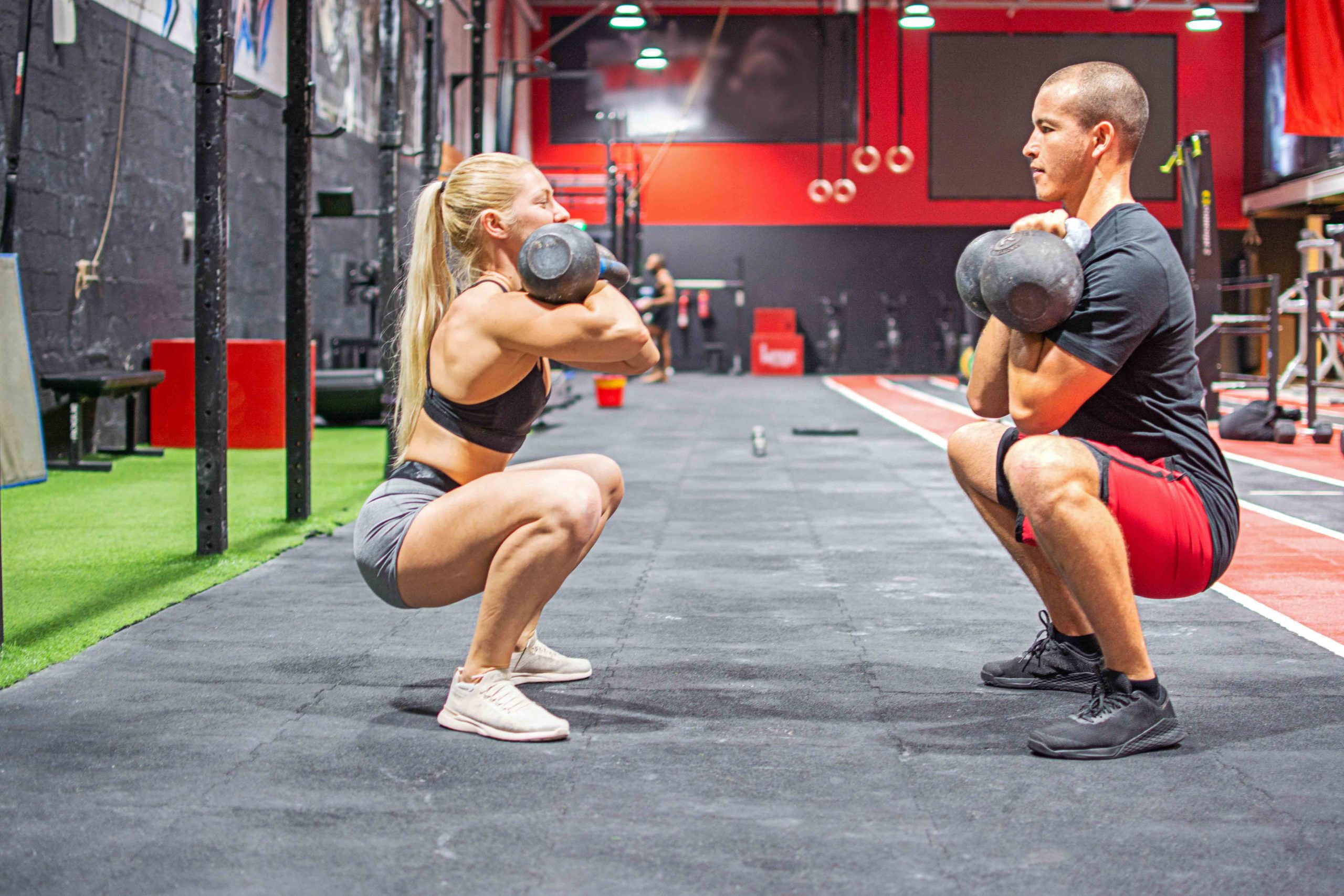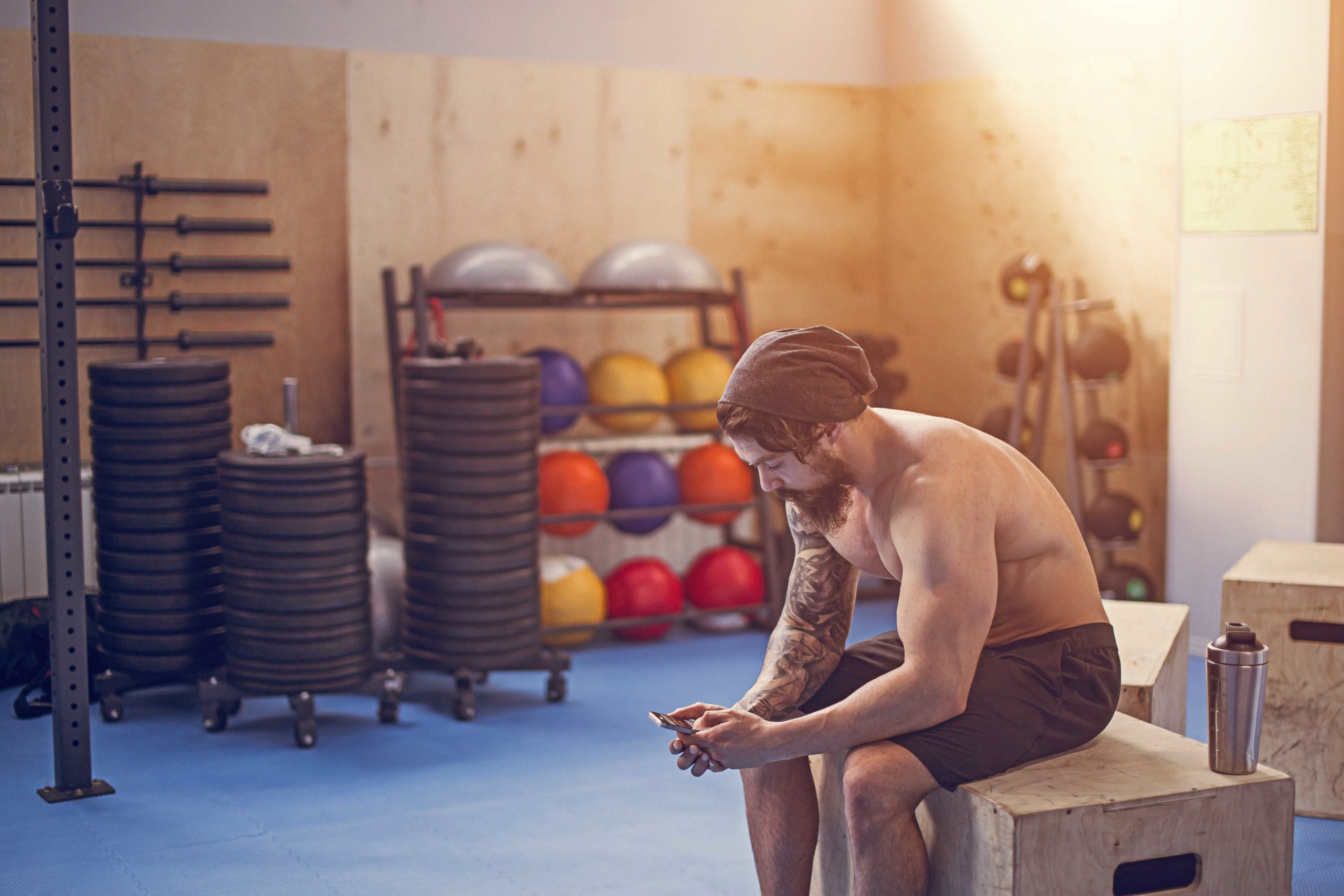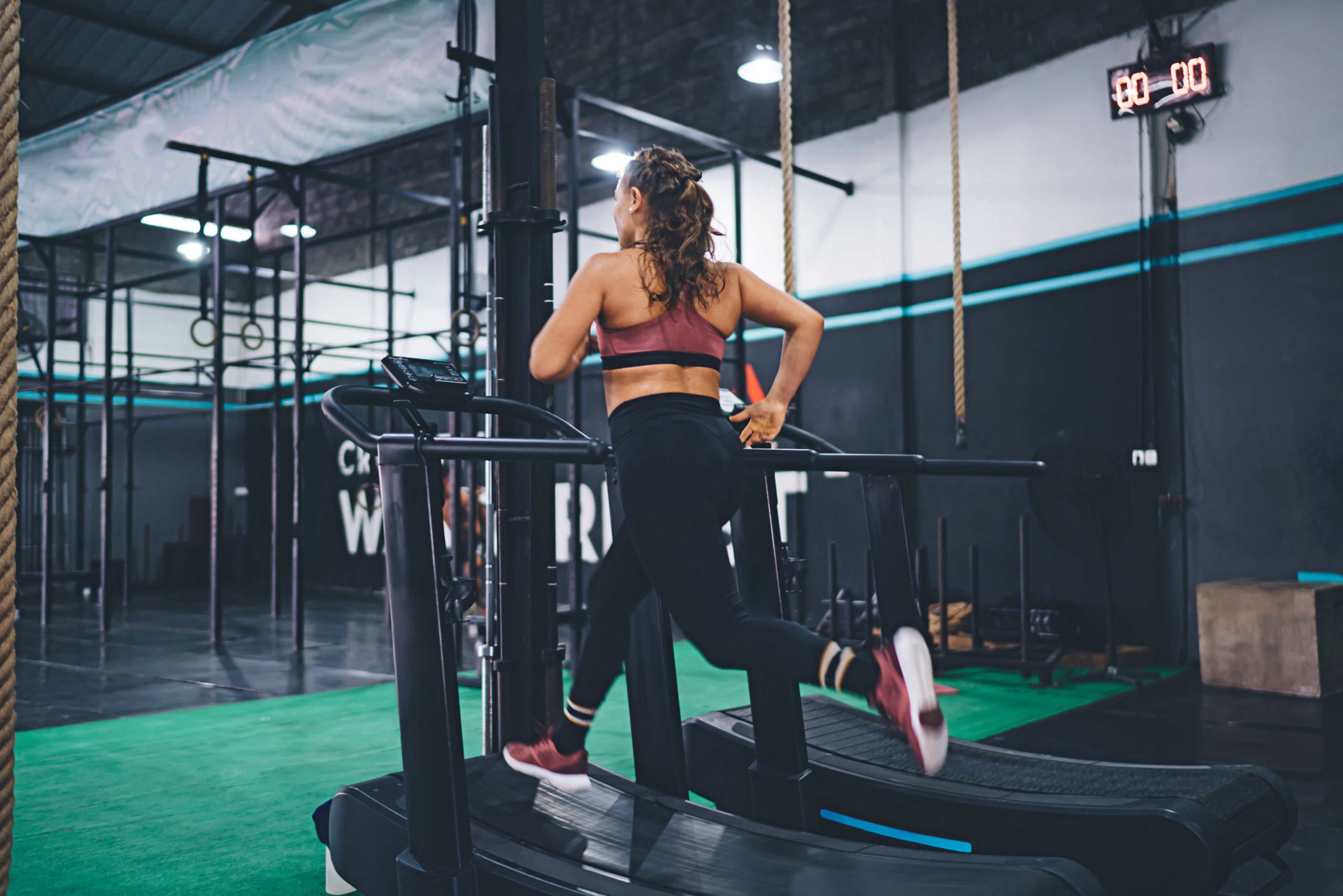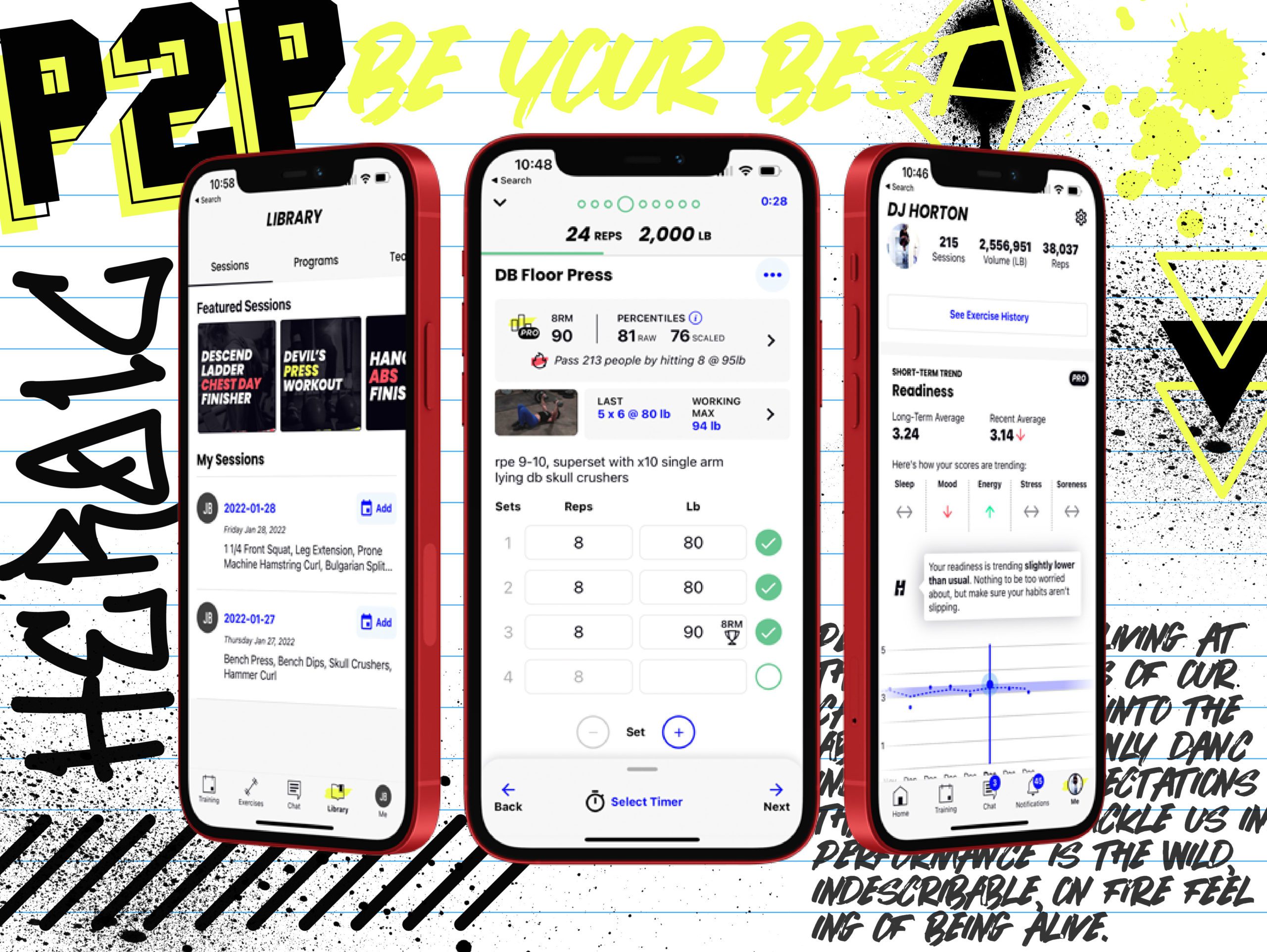How to Create a Balanced Full Body Workout

Dave Leek is a personal trainer and coach out of Ontario, Canada. He’s been in the fitness industry for almost 20 years and currently maintains a roster of remote clients while coaching CrossFit. As a dad, functional training and longevity are important to him. That means being able to create sustainable full body workouts when your time is precious, but you still want to rock a killer physique. Read on to see how he structures training for the biggest net gains.

Program a Workout Routine for Yourself & Feel Confident Doing It
All too often we see unbalanced and out-of-proportion bodies walking around in commercial gyms. You know exactly what I’m talking about here and if you don’t, then chances are it’s you with one of these lucky physiques.
Massive upper bodies with twig legs (‘Friends Don’t Let Friends Skip Leg Day’ is a meme for a reason), huge rounded chests with non-existent backs, big ‘ol gorilla arms attached to sarcopenic torsos, the list goes on.
It’s extremely easy to fall into the trap of training what we like, what we’re strong at or simply what we think we should be training when it comes to the pursuit of fitness. More often than not, these imbalances arise from seeking a specific aesthetic instead of a balanced approach to fitness, centered around full-body functional exercises (which usually end up producing symmetrical aesthetic physiques anyway).
The question becomes, how do we create a proper full-body training program that produces a well-rounded physique free of glaring imbalances and functional weaknesses? There are a million ways to write a good program and it usually depends on the athlete, their abilities, goals, and a ton of other factors including nutrition and genetics.
But instead of focusing on crafting the perfect program, I want to take a look at what comprises a well-balanced workout. This should help you extrapolate based on your needs to design your own programming afterwards. This workout template is best suited for the trainee who has at least 2-3 days to devote to training and wants to get the best bang for their buck by covering as many muscle groups and training modalities as possible during each workout.
What Makes a Good Full Body Workout?
Every solid workout includes a few basic components:
- a warmup
- the body of the training session
- a cooldown
Even better workouts include a few more specific elements:
- a dynamic warmup
- tissue mobilization
- skill work
- metabolic conditioning (or energy system work)
- rehab/prehab exercises
stretching
If you really wanted to start showing off, you might even include things like visualization, breathwork and meditation to get the whole body/mind connection dialed in fully. The list of possibilities is long and it’s no wonder many athletes start with good intentions, but lose track and space out on valuable pieces.
I want to be clear — any workout is better than no workout.
If you’re a novice, try not to get caught up in all of the information out there and end up doing too much or getting overwhelmed and doing nothing at all.
I’ve always been interested in the idea of crafting the ‘perfect’ workout that included a little of everything in a balanced manner without leaving me in the gym for 4 hours each day trying to check off all the boxes. As my training age has grown and my personal life grew more robust with family and responsibilities, I began to place more value in programs that lend themselves to the philosophies of ‘less is more’ and ‘minimum effective dose’ as it seemed to make the most sense. Not surprisingly, I found the majority of my clients were looking for the same thing.
Let’s combine and simplify things by breaking this down into three categories:
- Warmup, joint & tissue prep
- The body of the workout
- Conditioning/cooldown/rehab/prehab

You Work too Hard to Not See Progress
Find Your Perfect Training Plan
Options for Every Goal
Training plans from real coaches covering any goal, fitness level, and number of sessions per week.
The Best Coaches
Get coached by the best. Olympians, ex-NFL stars, Titan Games Winners, Sport Scientists and more.
Starting at $1/ day
With many options including a free 7 day trial, you can try out programming before you commit.
Warmup, Joint & Tissue Prep
This portion of the workout is probably the most important. It’s during this time that you’re preparing your body and mind for the work that’s about to happen. Be mindful and intentional with your approach to warming up. If you catch yourself just zoning out and going through the motions, you’re wasting a valuable warmup.
Instead, try to actually think about what you’re here to do, how the workout is going to look/feel and what you want to get out of this training session. Open your TrainHeroic app to see what you did last time and log what you intend to do today plus any notes on how you’re feeling physically/emotionally/mentally. The more you track, the better informed you’ll be for future training sessions.
Step 1: Get your heart pumping, blood flowing, and core temperature elevated.
I like to start everyone with 5-7 minutes of low intensity, steady state cardiovascular activity just to get moving. This can be done on any machine of choice (treadmill, bike, rower, etc.) or even with bodyweight movements like running or skipping.
Step 2: Use dynamic movements.
Try to choose movements that closely resemble what you’ll be doing in the workout (eg. kettlebell swings on a hip hinge day, box jumps on a squat day, push ups on a horizontal push day, etc.). This will send additional blood flow to the specific muscles you intend to use during your workout and also prime the movement patterns before you start throwing resistance into the mix.
Step 3: Work on your tissues and prime your range of motion.
Now that your temperature is up and your muscles are flush with blood, you’re in a great state to improve circulation, work on sticky muscle adhesions and safely increase joint range of motion. Grab a foam roller or lacrosse ball and work out any kinks in your musculature. Include some dynamic stretching (stretching through movement instead of static holds). Try not to skip this part. These efforts will increase your range of motion and reduce chances of injury during your workout.
Take your time and be thorough but efficient with your warmup as it can really set the ceiling for how well your workout goes. Don’t be shy to spend anywhere from 15-30 minutes here if you have the time.
The Body of the Workout
- Upper body push and pull — push up, row, shoulder press, chin up, pull up, ring rows
- Lower body focus — squats and hinge movements like goblet squat, kettlebell swings, Romanian deadlift
- Core movements — leg raise, plank, sit up, side plank, supermans, farmer’s carry
The great thing about this format is that it’s easy to remember, it encompasses the entire body in just three blocks and it’s not hard to work in a large variety of exercises from day to day and week to week to keep things fresh and exciting.
It’s usually best to focus on compound exercises that pack a punch (think squats, deadlifts, overhead press, etc.) but smaller muscle groups and accessory exercises can easily be substituted from time to time when needed (think triceps press down, bicep curls or leg extensions and leg curls).
What about Volume?
The topic of overall volume, sets, reps, tempo and intensity technique is a discussion for another article. A lot of these details will vary greatly depending on your specific needs and the focus of your training program.
When in doubt, you can’t go wrong rotating between 2-4 sets and 8-15 reps from week to week. This won’t address all of your needs, especially if maximum strength or endurance are your main goals but it will cover most of your bases and keep you pretty strong, decently muscular and provide a solid base of muscular endurance.

Level Up Your Training
With TrainHeroic’s immersive training app
TrainHeroic does everything you wish your old gym notebook could do.
Take the guesswork out of training with built-in exercise instruction and basic training programs. Compete against yourself and others. Track your performance and readiness. Smash your goals.

Metabolic Conditioning / Cooldown / Rehab & Prehab
Just because it’s the end of your workout doesn’t mean it’s any less important. Like many athletic practices, a strong finish is key to tie it all together and reap the most gains from your efforts.
By now you’re feeling fatigued, pumped, and you’re ready to tie it all up with a nice little bow and head home for that post-workout nourishment. Not just yet. Now is when we shift gears from muscular to cardiovascular and give the heart and lungs some well deserved attention to aid in blood flow, improve calorie burn/fat loss and contribute to your overall longevity.
Similar to the body of your workout, there are a ton of ways to go about your metabolic work, but if we’re keeping it simple, I recommend splitting your efforts:
- Low-intensity, medium to long duration, steady state or circuit work (low gear work)
- High-intensity, short duration, all-out effort work, sprint style (high gear work)
You can incorporate these any way you’d like but you should be sure to address both each week, preferably giving the lion’s share to the high-intensity work. I don’t recommend doing both on the same day as it can diminish the returns from both efforts compared to if you do them on separate days.
Focus on hitting both styles, rotating back and forth, changing up your modality of choice and keeping the effort high, especially during the high-intensity sprint work. As a general rule, your high intensity work should range from 4-10 minutes (it’s hard to maintain near max effort for longer than that) and your low intensity work can range anywhere from 15-60 minutes depending on your goals and available time.
Finally, the Cooldown
The part that most people skip is the cooldown and rehab/prehab work. This is an important component because it provides time to reflect on the work you did, noting what felt good and the areas you need to work on.
Your cooldown also allows your body necessary time to reduce your heart rate, lower blood pressure and drop body temperature before leaving the gym. It’s basically a “free fitness” time when you can work in any necessary rehab or prehab movements as they’re generally lighter in intensity and will contribute to an appropriate cooldown.
These movements may include things like rotator cuff exercises, additional tissue work on problem areas or longer, more intense static stretching for finicky muscles. This is also a great time to incorporate breath work and even light meditation. Try it!
So, there you have it, a simple format for designing your very own, complete and balanced full body workout. While this is a strong template to follow that will keep many athletes on the right path for a long time, it’s important to add that this isn’t the only way to accomplish your goals.
There’s a saying that goes ‘everything works but nothing works forever,’ which is so true in the fitness realm. Mix things up, try different programs, and most importantly, track your progress so you know what works and what doesn’t. If something is working, stick with it until it isn’t. And if you get lost along the way or buried in the mountains of ever-growing health and fitness information, feel free to revisit this post and bring it back to basics with a program template you know will get you back on track to building that well-rounded physique.
Want Training Tips, Exercise Guides & Knowledge Bombs Sent to Your Inbox?
Sign up for the FitNerd newsletter from TrainHeroic
Related articles
3 Ways to Improve Mobility Without Stretching
Are you still trying the endless foam rolling and stretching exercises to get that deep squat position? We know how important mobility is for great, or even GOOD performance. All professional athletes have some comfortability in end ranges of motion. So, what else do...
The Ultimate Guide to Lunges: Queen of all Glute Exercises
Your glutes are the largest muscle group in your body. They’re responsible for almost everything your legs do—walking, running, jumping, squatting, lunging, and just standing upright. As far as moving through space goes, strong glutes are the bedrock of overall...
A Beginner’s Guide to Steel Mace Training
Author: Jesse Grund
Mace training will make you a better mover without it’s not confining you to a fixed space or predetermined range of motion. Second, it’s an offset load with 80 to 90 percent of the weight in the head. You’re also constantly having to resist rotation, which creates greater core engagement.

Join the community
Sign up for the latest training news and updates from TrainHeroic

About TrainHeroic
Support
Made with love, sweat, protein isolate and hard work in Denver, CO
© 2021 TrainHeroic, Inc. All rights reserved.






